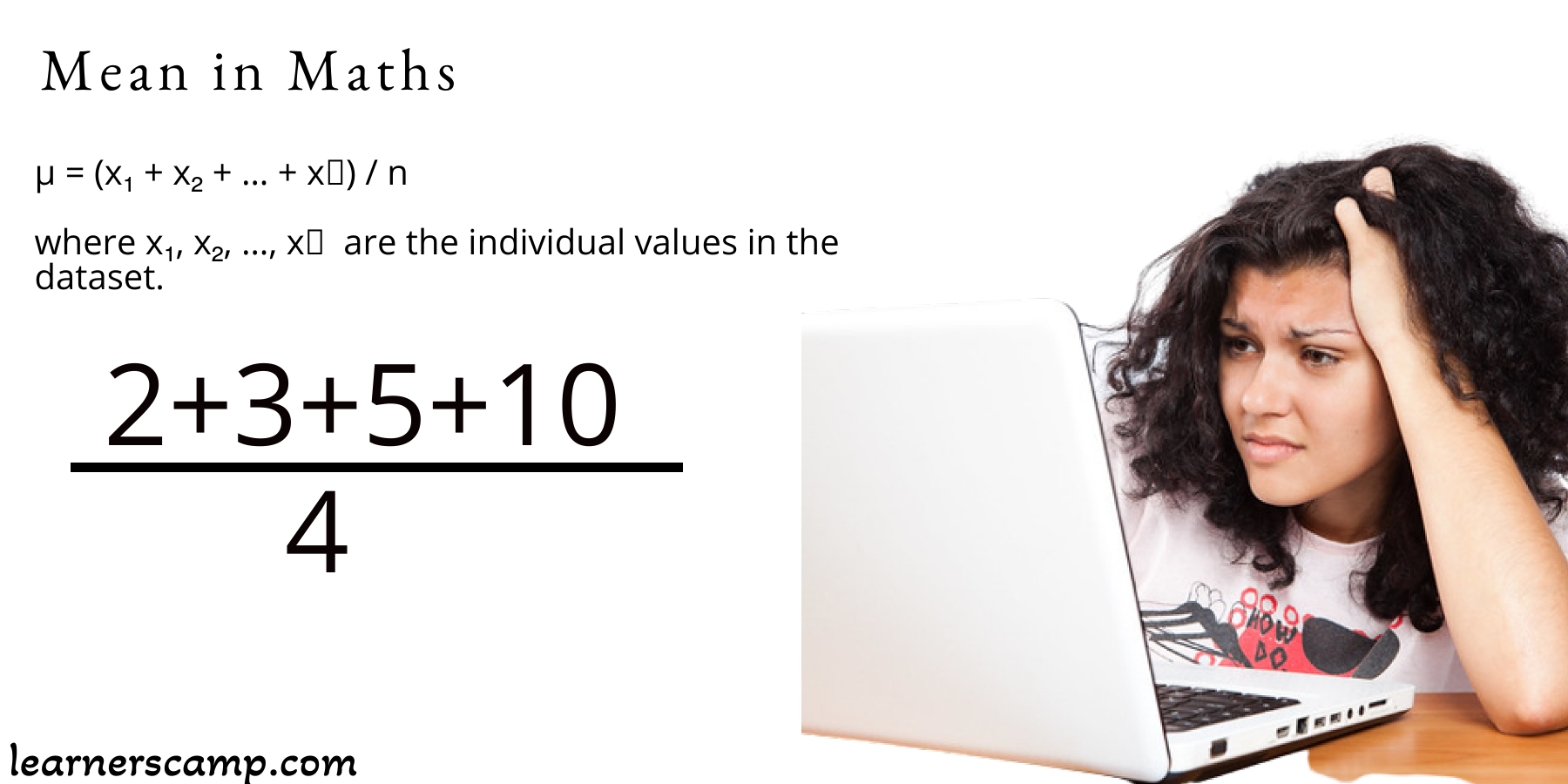How to find Mean in maths is essential for interpreting data, making predictions, and drawing conclusions. In this blog, let us explore what the mean is, how to calculate it, and its significance in different contexts.
Learnerscamp has come a long way to help students understand different mathematical concepts including how to find Mean in maths , how to find mode and median of a dataset. Not excluding other maths topics such as area ,perimeter, coefficients among many other topics. Learnerscamp also enables you to learn maths at the comfort of your space, pace and time .
What is the Mean?
The mean, often referred to as the average, is a measure of central tendency in a set of numbers. It represents a typical value around which the data points tend to cluster. When we talk about the mean in everyday language, we’re usually referring to the arithmetic mean, which is the sum of all values in a dataset divided by the total number of values.
Calculating the Mean:
To calculate the mean of a set of numbers, follow these steps:
- Add up all the numbers in the dataset.
- Count the total number of values in the dataset.
- Divide the sum obtained in step 1 by the total number of values from step 2.
Mathematically, the formula for the mean (μ) of a dataset with ‘n’ values is:
μ = (x₁ + x₂ + … + xₙ) / n
where x₁, x₂, …, xₙ are the individual values in the dataset.
Example:
Let’s find the mean of the following dataset: {4, 7, 9, 12, 15}.
- Add up all the numbers: 4 + 7 + 9 + 12 + 15 = 47.
- Count the total number of values: There are 5 values in the dataset.
- Divide the sum (47) by the total number of values (5): 47 / 5 = 9.4.
So, the mean of the dataset {4, 7, 9, 12, 15} is 9.4.
Significance of the Mean:
The mean is a crucial statistical tool with several important applications:
- Representing Central Tendency: It provides a single value that summarizes the entire dataset, giving insight into the typical value.
- Comparing Different Datasets: Mean allows for comparison between different sets of data, aiding in analysis and decision-making.
- Predictive Purposes: In forecasting and modeling, the mean is often used as a basis for predictions and estimations.
- Statistical Analysis: In fields like economics, psychology, and sociology, mean is extensively used for analyzing trends and patterns within data.
Also, understanding the mean or how to find Mean in maths is fundamental in mathematics and various other disciplines. It serves as a concise summary of data and facilitates decision-making and analysis. By knowing how to calculate and interpret the mean, one gains valuable insights into the underlying patterns and trends within a dataset, enabling informed conclusions and predictions.





